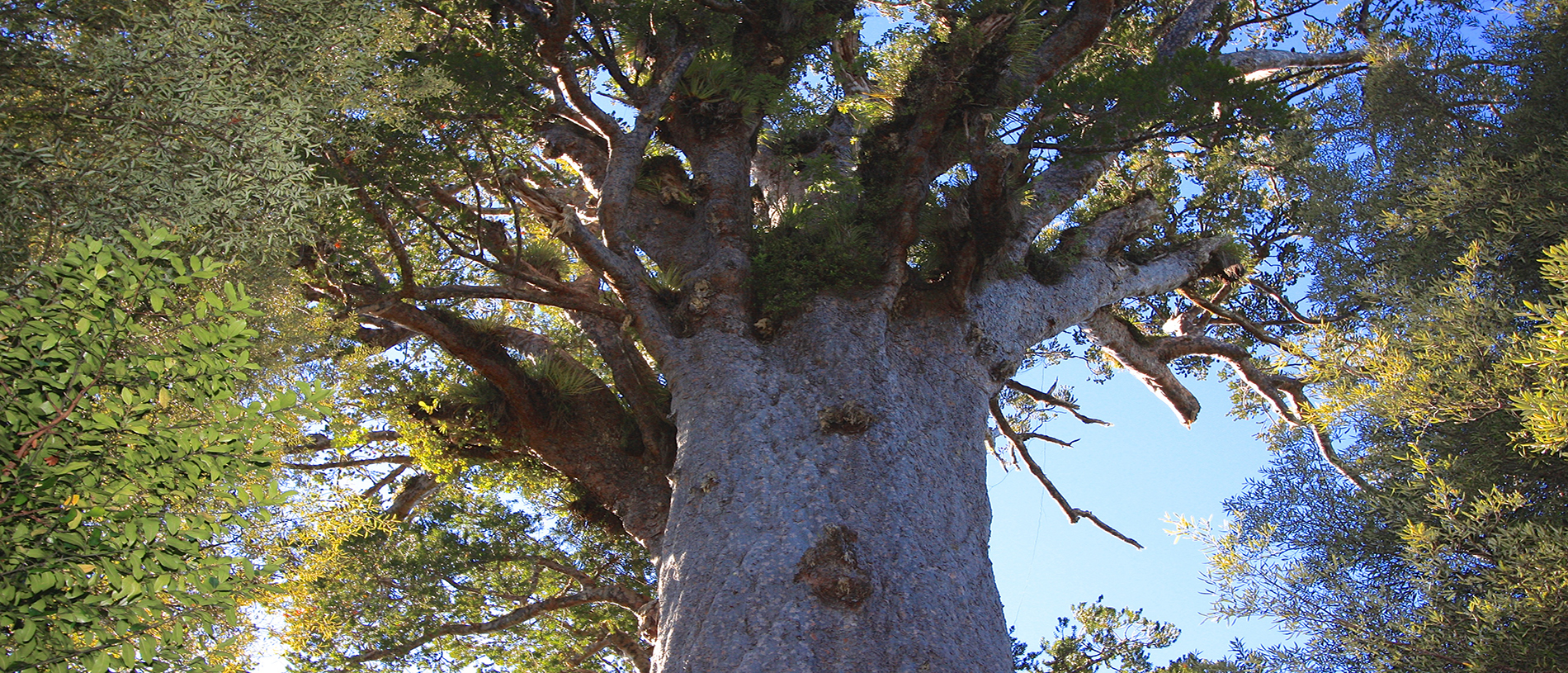
Tāne Mahuta Walk
Visit the famous Tāne Mahuta, Lord of the Forest – New Zealand's largest known living kauri tree, located in the Waipōua Forest.

It's hard to imagine what the north must have been like in the days before the timbermen came – unless you visit one of the remaining kauri forests and have the chance to stand among these ancient giants.
To the axe-and saw-wielders, the trees were just a commodity: with their straight, branchless trunks rising 40 or even 50m to the crown, hundreds of feet of timber could be sourced from a single tree. The smaller trees were ideal for masts and spars for sailing ships; the colloquial name for young kauri, ‘rickers’, is a corruption of ‘riggers’. Kauri timber was used for building houses and ships, both here and overseas: cities such as Sydney and San Francisco were each built with their fair share.
Like many natural resources in the nineteenth century, the kauri seemed endless, yet by the early 1900s, the great forests were gone. Only pockets remain today, especially in the remote and rugged west of Northland.
Kauri were a spiritual resource for Māori, too, as the kings of the forest. Legend tells of how the whale and the kauri were once friends. When the whale could not persuade the tree to join him in the ocean, he gave it its thin, resinous skin instead.
The largest remaining remnant of a kauri ecosystem lies in the Waipōua Forest. Acquired by the government as a state forest in the 1870s, it was earmarked for logging until a protracted conservation campaign in the 1950s saw it set aside for posterity.
While the forest area is large, it is surprisingly accessible: in fact, the main road runs right through it.
It is a magical experience to drive the winding highway through the bush, past giant trees which encroach onto the asphalt in places. You don’t want to be in a hurry here.
Some of the biggest trees are just a short walk from the road. The king of them all is Tāne Mahuta, the Lord of the Forest, the largest remaining kauri. More than 50m high and believed to be around 2000 years old, it stands like the pillar of an enormous green cathedral, inciting awe in all who see it. Bear in mind as you stare up at it, however, that the largest kauri ever recorded was nearly twice its bulk. Other huge specimens such as Te Matua Ngahere (father of the forest) and the Yakas kauri are nearby.
More magnificent examples can be seen at the Trounson Kauri Park, south of Waipōua, which has been a reserve since 1921. This 586ha ‘mainland island’ is being actively pest-controlled to try to restore the forest ecosystem, home to kiwi, kūkupa (the Northland name for native wood pigeons), native bats and the fascinating, carnivorous and cannibal kauri snail or pupurangi.
Unfortunately, just as their fine timber signed their death warrant in the 1800s, today the trees’ popularity is again becoming a factor in their demise. Kauri dieback disease, a fungus-like infliction which has already killed thousands of these trees, is easily spread by walkers and shoe-hygiene practices need to be followed – see the instructions at kauri sites and play your part.
South of the kauri forests lies the northern branches of the massive Kaipara Harbour, the largest in New Zealand and once a busy and significant waterway, the main route to the north. The sailboats and steamers have gone and most of the people, but the harbour retains its significance to Māori and fishermen alike.
Dargaville, on the Northern Wairoa River where it sluggishly spreads out to become part of the harbour, was a centre of the kauri industry in the late 1800s but now styles itself the kumara capital of the north. The sandy Pōuto Peninsula stretches south to enclose the harbour, the entrance to which has claimed more than 100 ships.
The story of the kauri days is told in detail at the excellent Kauri Museum at Matakohe on State Highway 12 southeast of Dargaville. Models, mannequins, dioramas and photographs bring the timbermen and gumdiggers to life, along with the world’s largest slab of kauri timber, 22m long.
Fittingly, at the turn-off to State Highway 12 from State Highway 1, where travellers first enter kauri country, there is a monument to one of the area’s favourite sons: Joseph Gordon Coates, who represented the Kaipara in Parliament for 32 years, led the Reform government during the Depression years of 1925–28 and served in the coalition war cabinet during the Second World War. On arriving at this spot on his way home from Parliament or further afield, it is reported that Coates would always say, ‘Well, I’m home again’.